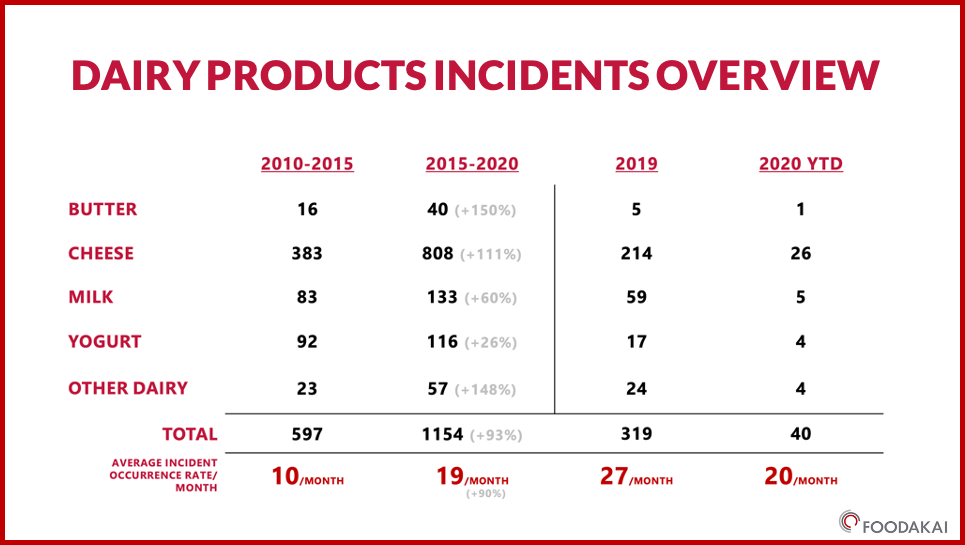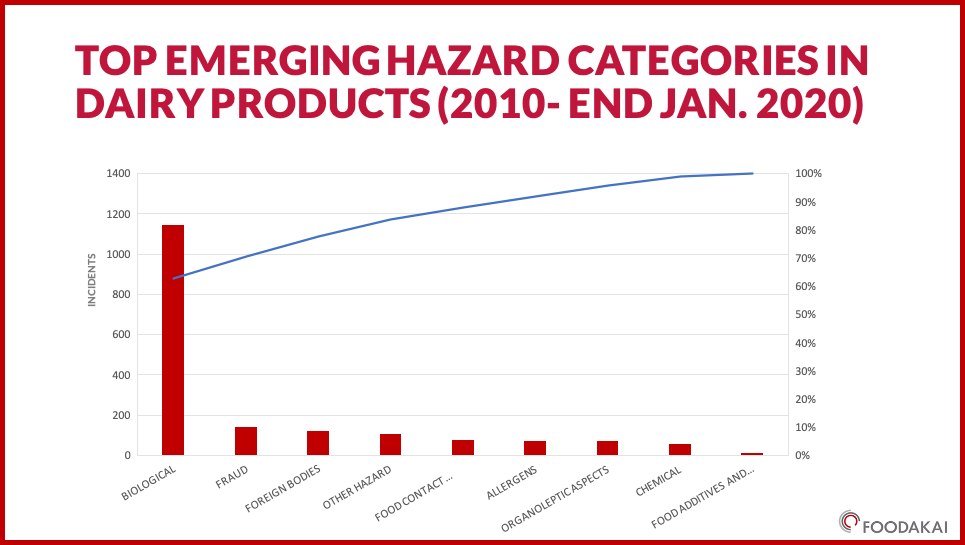Global Safety: The Case of Dairy Products and TheFSM
Having analysed in our previous posts, the food safety related incidents of non-alcoholic beverages and chocolate products, now we are moving into the dairy products, as they are among the important elements of a healthy diet, which are currenty witnessing a huge demand across the globe. From the economic perspective, the global dairy products market size is expected to reach $574.3 billion by 2027, rising at a market growth of 4.7% CAGR during the period 2021-2027. There are many manufacturers who manages the growing requirements of the health-conscious population all over the world. Various new products like lactose-free, low-fat and cholestrerol-free dairy products are emeged in the market due to the changing trends and preferences among people.
To ensure the continuous growth of the dairy products, their safety and authenticity need to be maintained which is a huge area of concern. Throughout the process, from farm to processor, different sources of contamination (biological, chemical or physical) may occur either accidently or intentionally. To secure the sustainable development of the dairy sector, there is a crucial need to collect, analyse and share data with a faster pace and to assess the possibilities for the escalation of a food risk.
The solution to the problem lies in the final outcome that will be generated through our EU funded project, under Horizon 2020 „The Food Safety Market“. An operational cloud-based platform which utilises state-of-the-art data technologies. The major pillars and applications that are foreseen to be joint under TheFSM platform are the FOODAKAI, AGRIVI and Food Inspector, enabling the measures towards data sharing and food safety.
In this post we will be based on the dairy industry report that Agroknow (Coordinator of our project) realised by FOODAKAI’s usage. In general FOODAKAI allows food companies map, manage and view data coming from control points in their production lines that are important for their procurement, QA and certification. Through this application they are able to monitor, trace and predict risks in their production lines, submit and exchange data with their inspectors, request and view data coming from their suppliers to inform supplier check and risk assessment, etc.
Via the accumulation of data for the case of dairy products over the past decade, we are able to form a well-rounded opinion towards the origin of arising safety incidents and the sectors where they are perceived to recur over the years. Focusing on the data of the past years, we can outline certain sectors that have been impacted exponentially. In short, the focal point of our food safety intelligence reports is to locate the cause of hazards and therefore outline emerging risks in the market.
The report incorporates the food safety insights for the dairy market over the past decade (2010- end Jan. 2020). For the first five years (between 2010 – 2015) the total number of incidents was 597, while in the latter half of the decade (between 2015-2020) there was an extensive rise in incidents. In comparison, the incidents in the second half almost doubled, reaching the amount of 1154.
A diverse range of products, each with its own hazard
From ice cream to cheese and butter, dairy consumption stretches back across thousands of years, and its products are enjoyed around the globe. In 2019, the volume of the dairy market worldwide was estimated to be about 225 metric tons, and is projected to grow to 234 metric tons by 2021.
When exploring the categories, milk and milk products can be broken down into five main areas. The first is butter with its 12 sub-categories including flavored, salted, unsalted and frozen. Cheese has a staggering 253 sub-categories including curd, raw cheese, frozen and spread. Milk includes infant formula, raw, fermented, and baby milk among its 20 sub-categories. 25 sub-categories are present for yogurt including yogurt drink, frozen, and flavored. Other dairy products feature 36 sub-categories including dairy desserts and powders.
For each of these milk and milk product categories, there are associated risks of food safety incidents that need to be managed effectively. These include food recalls, border rejections, food alerts, public announcements, official information announcements, information for attention, import refusals, import alerts, enforcement reports, imported food reports, and consumer advisories.
Increasing incident rates over the last 5 years: cheese biggest culprit
Worryingly, over the last 10 years, the number of dairy products incidents have risen from 10 per month between 2010-2015 to 19 a month between 2015-2020. The most at risk of food safety incidents is in relation to cheese.

Overall, across milk and milk products the top emerging hazard category is documented as biological with over 85% of incidents being as a result. This is followed by fraud, foreign bodies but they only make up under 10% of incidents.
Meanwhile, over the past 5 years, cheese has been the dairy product with the highest rate of incidents totaling 808 globally. This is followed by milk with 133 incidents, 116 yogurt incidents, 57 other dairy and 40 butter.
The hazards relating most common in cheese include listeria monocytogenes, moulds, shigatoxin-producing E.Coli and Salmonella SPP.
Dairy: The biological threat
Over the last 10 years, the top hazard associated with dairy was biological. However, the only exception is yogurt that has a high instance of foreign bodies.

The data shows that the top emerging hazards in dairy products include listeria monocytogenes, moulds, Escherichia Coli, Shigatoxin-Producining E. Coli, Salmonella SPP, E. Coli 0:26, glass fragments, fat in dry matter (FDM), allergens, and plastic fragments. These hazards account for 64% of all 2019 dairy-related incidents.
A risky business: but not that risky with the right data
The expansive nature of the dairy supply chain makes the management of dairy a risky business. A good way to mitigate these risks is to achieve full visibility over the dairy supply chain data by accessing intelligent insights. When managing the dairy supply chain or working within its constituent components, it’s essential to have information that can help identify the greatest risks. Food safety professionals can use hazard data insights to quickly update points of critical control when needed and intervene at important stages of the dairy manufacturing process. Such a process will be highly facilitated by employing TheFSM industrial data platform which facilitates the exchange and connection of data between different food safety actors interested in sharing information that is critical to food safety and certification.
